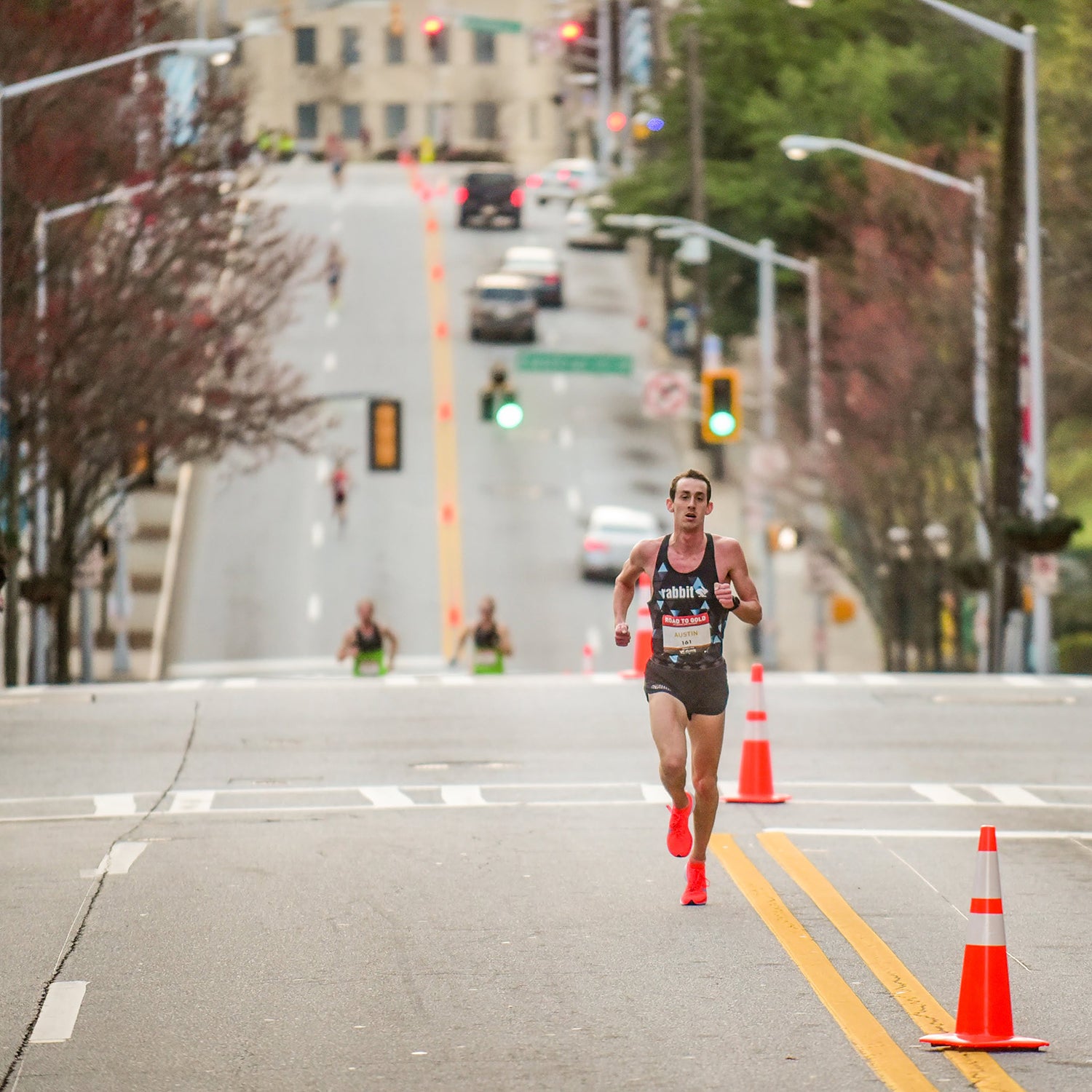A lot can happen when youÔÇÖre trying to run 26.2 miles as fast as you can, so itÔÇÖs not always easy to predict how elite marathons will unfold. (That is, unless youÔÇÖre weighing the chances of a certain invincible Kenyan.) As a rule of thumb, the odds of an upset are higher in races that donÔÇÖt use pacemakers (i.e. ÔÇťchampionship styleÔÇŁ events), and higher still when conditions are tough. Case in point: the 2018 Boston Marathon, where freezing rain and brutal winds decimated the professional fields and paved the way for Des Linden and Yuki Kawauchi to secure their first victories in a Marathon Major.╠ř
While itÔÇÖs still too early to forecast what kind of weather weÔÇÖll see at the USATF Olympic Team Trials for the marathon, which are taking place in Atlanta on February 29, we already know one aspect of the race that is sure to make things interesting: itÔÇÖs going to be hilly. According to the provided by the Atlanta Track Club, the circuit course will feature 1,389 feet of uphill running and 1,382 feet of downhill. That may sound unimpressive to an ultrarunner like Jim Walmsley (who, rumor has it, was raised by wolves on Silverton Mountain in Colorado) but for a road marathon it is significant. For context, the Boston Marathon, whose second half features the famous Newton Hills, has only╠ř924 feet of total uphill running, according to the Boston Athletic Association.╠ř
David Monti, who is the editor and publisher of and has covered every U.S. Olympic Trials in the marathon since 1996, says that he expects the tough course to be a ÔÇťhuge factorÔÇŁ at the 2020 Trials and that he anticipates a ÔÇťvery slowÔÇŁ first 5K (i.e. 16:00 for the men and 19:00 for the women). ÔÇťStrong, mature, and smart athletes, like Jared Ward, Sara Hall, , will definitely benefit from the course,ÔÇŁ Monti notes. ÔÇťItÔÇÖs definitely a grinderÔÇÖs race.ÔÇŁ
Ward affirmed that the course was likely to favor ÔÇťgrindersÔÇŁ and ÔÇťexperienced runners,ÔÇŁ while adding that he is expecting the race to unfold like a ÔÇťcross country version of a marathon,ÔÇŁ where the race actually feels longer than 26.2 miles.╠ř
On the face of it, that would also seem to favor a guy like Walmsley, who last year ran a world record over 50 miles. The colossus of the ultra scene has never raced a normal marathon, and qualified for the Trials by hitting the standard in the half marathon (1:04:00) in Houston last year. (Walmsley raced another half marathon in Phoenix last weekend and clocked 1:02:13, though it turned out that, due to a misplaced cone, the course was approximately 313 yards too short, .)╠ř
To be clear, the odds of Walmsley finishing in the top three at the Trials and making the U.S. Olympic team are extremely slimÔÇöon par, perhaps, with 2016 Olympic triathlon gold medalist Gwen JorgensenÔÇÖs stated ambition to eventually also win an Olympic marathon. Indeed, in the seething underbelly of the running community represented by the LetsRun message boards, any speculation that Walmsley might have an outside shot tends to inspire maximum derision. (See: the from two days ago titled ÔÇťWalmsley runs a fake 1:02 half, trail trolls lose their minds.ÔÇŁ)
For his part, Walmsley doesnÔÇÖt seem to harbor any illusions about his chances.
ÔÇťDo I know itÔÇÖs almost impossible or a moonshot or probably not going to happen? Yeah, absolutely,ÔÇŁ he told LetsRun last May. ÔÇťBut I think with my ultrarunning background, I do bring in a way to approach the marathon a little differently, especially on a course like Atlanta, that maybe I have a little niche if the race plays out [a certain way] that I could compete for a spot. But yeah, dream big, swing big. I donÔÇÖt think thereÔÇÖs anything to lose there.ÔÇŁ
On the womenÔÇÖs side, the undulating terrain in Atlanta only adds to the intrigue of a race that has several legitimate contenders, but no clear favorite. The three women who have the fastest PRs in the field are Jordan Hasay (2:20:57 Chicago, 2017), Amy Cragg, (2:21:42 Tokyo, 2018) and Sara Hall (2:22:16 Berlin, 2019), but those times were achieved on courses with flat profiles. In terms of raw speed on the road, there may be no American woman who can currently compete with Emily Sisson, but Sisson has only run one (flat) marathon (albeit in 2:23:08ÔÇöLondon 2019ÔÇöthe second-fastest debut by an American woman) and has yet to show what she can do on a tough course. Given that the topography in Atlanta is going to be more similar to a course like New York City, the race might end up favoring veterans like Linden or Molly Huddle, both of whom have run well in NYC in recent years.╠ř
ÔÇťI agree with Jared on the cross-country feelÔÇöthe course rolls the whole way,ÔÇŁ Huddle says. ÔÇťIt reminds me of the NYC marathon course but without the big bridge hills.ÔÇŁ
Speaking of NYC, maybe Atlanta will see the long overdue coronation of Kellyn Taylor, who finished 7th in New York last November (2nd American, behind Linden) in 2:26:52ÔÇöthe fifth-fastest time by an American woman on the course. In recent years, Taylor, who is a 33 year-old mother and competes for the , has balanced her marathon training with getting certified as a professional firefighter, a profession she plans to pursue once her running career winds down. (At a press conference last fall Taylor assured me that she could do ÔÇťa lot of pull-ups.ÔÇŁ) If, as Monti has prognosticated, the Trials course will favor ÔÇťstrongÔÇŁ runners, Taylor might be another athlete to watch.╠ř
Ben Rosario, who coaches Taylor and Bruce, told me in an email that╠řthe challenging elevation profile required targeted, ÔÇťcourse-specific,ÔÇŁ preparation. He added, however, that he didnÔÇÖt think that the hills in Atlanta would ultimately favor one type of runner. ╠ř
ÔÇťThe fittest athletes will make the team, given that they are properly prepared,ÔÇŁ Rosario says.
Of course, you can be the fittest, most well-prepared athlete and still race poorlyÔÇöbe it by overextending yourself in the early miles, or by underestimating the seriousness of a late-stage move from your competition. ThatÔÇÖs why, if we want to see a thrilling competition in Atlanta, we should probably hope that Walmsley and other runners with nothing to lose take a few big risks. Dream big. Swing big.╠ř


